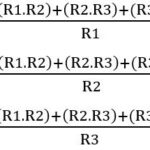What is the reason for poor CQI in LTE?
Let me explain this in a way that makes it easy for you to connect the dots. CQI, or Channel Quality Indicator, is something your phone or any user equipment (UE) reports back to the network. It tells the base station how good or bad the radio link is between your device and the eNodeB (base station in LTE). The better the quality, the more data the network can send you efficiently. But when CQI is poor, it means your device is telling the network, “Hey, the link isn’t great, send data more cautiously.”
You and I both know how frustrating it is when data becomes slow or unstable, and often, poor CQI is at the heart of it. Let’s break down what can cause this issue:
- Poor Signal Strength (Low RSRP): When the Reference Signal Received Power (RSRP) is low, the signal coming from the cell site is weak. This happens when you’re far from the tower or when obstacles like buildings block the signal.
- High Interference (Low SINR): If your device receives too much interference from nearby cells or devices, the Signal-to-Interference-plus-Noise Ratio (SINR) drops. This leads directly to poor CQI reports because your device struggles to hear the signal clearly.
- Fast User Movement: When you’re in a moving car or train, the channel conditions change rapidly. Your device may not be able to keep up with these changes, and CQI fluctuates or stays poor.
- Network Load: Sometimes, even if signal conditions are decent, a heavily loaded network with too many users can cause scheduling delays and lead to less efficient data transmission, lowering effective CQI feedback.
- Poor Antenna Conditions: If your phone’s antenna is not functioning optimally or if the device is being held in a way that blocks the antenna, signal reception weakens and CQI reports reflect this.
- Multipath Fading: In urban areas, signals reflect off buildings and structures, arriving at your phone slightly out of sync. This causes signal distortion, reducing the effective quality seen by your device.
Now, as you’ve seen in earlier topics like “What affects SINR?” or “What causes poor RSRQ?”, many of these elements are interrelated. SINR and RSRP often work together to influence CQI, so if either of them is off, CQI will take a hit too.
When CQI drops, the LTE scheduler on the network side reacts by choosing more robust but slower modulation and coding schemes—like switching from 64-QAM to QPSK. This helps maintain the connection, but at the cost of throughput. That’s why you might feel your download speeds crawling even though you’re still connected.
So if you’re facing consistently poor CQI, here are a few things that might help:
- Move closer to a window or higher ground if you’re indoors
- Avoid obstructions like walls or metal objects
- Try switching to a different LTE band, as some might be less congested
Understanding CQI not only helps you troubleshoot LTE performance but also gives you a broader view of how radio network conditions impact your experience. And like we’ve touched on in our earlier discussions on LTE link adaptation and scheduling, CQI is a key player in ensuring you get the best possible data rate based on current conditions.


